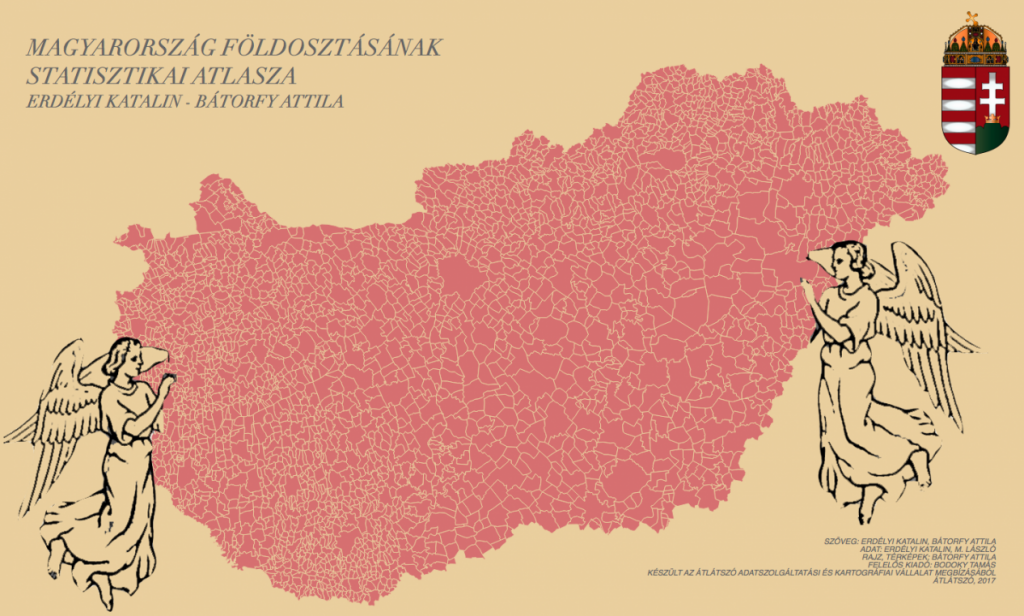The https://english.atlatszo.hu use cookies to track and profile customers such as action tags and pixel tracking on our website to assist our marketing. On our website we use technical, analytical, marketing and preference cookies. These are necessary for our site to work properly and to give us inforamation about how our site is used. See Cookies Policy
Data visualization: mapping the results of state land auctions
The Hungarian government auctioned off an incredible amount of state-owned land in 2015 and 2016. The state put up 290,000 hectares for sale and managed to sell two-thirds of that. Atlatszo.hu spent months mapping this enormous sale of land and we are now presenting our findings in different maps and infographics here.
On of our key findings is that the biggest beneficiaries of the land auctions are Lőrinc Mészáros and his family. The mayor of Felcsút, a long-time friend of PM Viktor Orban, and his family bought 1550 hectares of state land.

It was announced in August 2015 that the government wanted to sell the majority of the state-owned land. Minister János Lázár then said that the government was hoping to add HUF 300 billion to the state budget with this move.
But the sale of state-owned land has been opposed by many ever since the idea was floated. It was argued that the price of land is constantly increasing, thus the state is losing money in the long-term by the sale. Also, almost all of the land that was up for sale had been rented out, any by selling the land the state is losing the income from renting out the land.
The third and probably most important argument was that this is an attempt by the government to provide its friends with valuable state land. This was such a major fear that the Hungarian Socialist Party (MSZP), Jobbik, Politics Can be Different (LMP) and Dialogue for Hungary (PM) joined forces at a protest against the land auctions – which is uncharacteristic in the extremely polarized Hungarian political scene.
There was also a fear that Fidesz was trying to let foreigners buy big chunks of Hungarian land. The reason for this was that the first government regulation that served as the basis of the auctions said that only Hungarian citizens are allowed to bid for the land, this was later changed. Right before the bidding started, they amended the law and made it possible for EU citizens to buy land.
The fears seem to be valid. József Ángyán, former minister for agriculture in the Orban government called the auctions ‘institutionalized robbery’ and named certain buyers ‘green barons’. Ángyán published several reports detailing how the new land owners are connected to Fidesz and how many of them seem to be on frontmen for others.
The government decided to stop the auctions in September 2016. According to official documents, 290,000 hectares were up for sale and two-thirds of that were sold for HUF 270 billion.
It was hard to put all the data into one database. The national land agency (Nemzeti Földalapkezelő Szervezet) published the results of the auctions by county and in PDF format. It was Greenpeace that put all that data into a spreadsheet and gave that to us with the help of Gábor Vágó. This allowed us to start working on a project that we had been planning for a long time: present the results of the land auctions in a format that allows the public to get a sense of what really happened and to see who got land where, for how much money and who paid the most.
You can see the results of our work at fold.atlatszo.hu, where you will find our data visualizations and maps that are based on the 250,000 data points of the land auction database. You can also find there all the stories we have written on this topic.
In the first graphic, you can see the date of the auctions, the total value and the total area of the land sold on that specific day.
The first map shows which village or town the land belonged to at the time of the auction. The second map shows how much money was paid for the land in any given township. The third map shows how many acres were sold in every township. And the fourth map shows where buyers had to pay the most for an acre, that is, where land was the most expensive.
On of the criteria for the sale of the land was that nobody can buy more than 300 hectares. But if we look at the data, it is clear that Lőrinc Mészáros bought 440,4 hectares (either alone or with his son who has the exact same name). If we look at the addresses of the buyers, we will find that a family sharing and address in Felcsút (311/5. Fő street) managed to buy more than 1014,4 hectares in total.
The lucky family is Mészáros’s: it includes his wife and his daughter Beatrix. His other daughter, called Ágnes, bought 245 hectares and his brother bought 291 hectares. This means that the Mészáros family owns more than 1550 hectares.
Data visualization: Attila Bátorfy
Data cleaning: Katalin Erdélyi, László M.
[sharedcontent slug=”hirdetes-english”]

